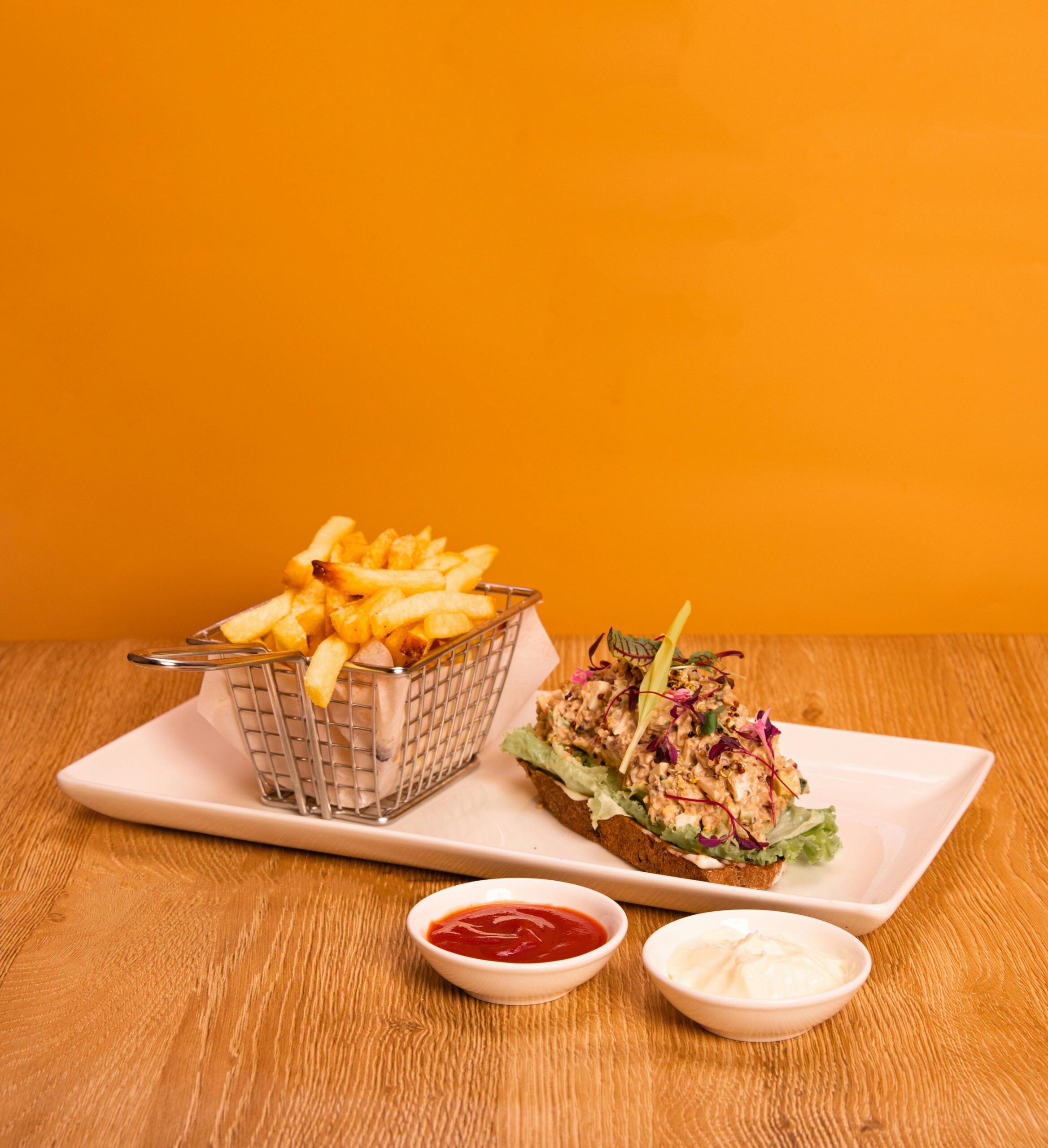- What is a Sustainable Restaurant Business Model?
- 5 Ways to Create a More Eco-Friendly Business Model in the Restaurant Industry
In today’s world, the importance of sustainability has become increasingly clear.
More and more businesses are looking for ways to reduce their impact on the environment and create a more sustainable model. The restaurant industry is no exception!
The restaurant industry is a vital part of our global economy and culture, providing employment, entertainment, and nourishment to countless people around the world.
However, the industry also has a significant impact on the environment and natural resources, from energy and water usage to food waste and packaging.
As consumers become more aware of these issues and demand more sustainable options, it is essential for restaurant businesses to adapt and create a more sustainable business model.
Fortunately, there are many ways to create a more sustainable restaurant business model, and it doesn’t have to be difficult or expensive.
In this article, Orders.co will explore 5 ways that restaurants can create a more sustainable business model and contribute to a greener future.
So, let’s dive in!
What is a Sustainable Restaurant Business Model?
A sustainable restaurant business model is one that prioritizes the health and well-being of the planet, communities, and all the stakeholders involved.
It is a model that looks beyond profit and focuses on the long-term impact of the restaurant’s operations on the environment, economy, and society.
Such a model includes various practices such as reducing food waste, implementing recycling and composting programs, promoting sustainable transportation, and many more.
By incorporating these practices, restaurants and other food service businesses not only do their part in protecting the environment but also create a more efficient and profitable business in the long run.
The sustainable restaurant business model is a win-win situation for everyone involved, as it not only helps the planet but also improves the overall customer experience, employee satisfaction, and community engagement.
It is a model that should be embraced by all restaurants, as it is not just a trend but a crucial step towards creating a better world for future generations.
5 Ways to Create a More Eco-Friendly Business Model in the Restaurant Industry
In the restaurant industry, there are a variety of ways to be more eco-conscious and create a sustainable business model. Here are five of the most effective ones:
1. Reduce Food Waste
Reducing food waste is a crucial aspect of creating a more sustainable restaurant business model.
Not only does it help to lower costs and increase profitability, but it also has a significant impact on the environment. Here are a few ways to reduce waste in your restaurant:
- Implement portion control: By carefully measuring and portioning ingredients, you can reduce the amount of food that goes to waste. This can be done by using standardized recipes and measuring cups or by using food scales to ensure accurate portioning.
- Utilize composting: Composting is a great way to turn waste into fertilizer for local farmers. This can be done by setting up a composting bin in the back of the restaurant, where food scraps can be collected and then transported to a local composting facility.
- Utilize leftovers: Instead of throwing away leftovers, consider repurposing them into new dishes. For example, leftover vegetables can be used to make soup or stir-fry. This not only reduces waste but also adds more variety to your restaurant menu.
- Donate excess food: Consider partnering with local charities and food banks to donate excess food. This is a great way to help those in need and reduce waste at the same time.
- Practice inventory management: Keeping an accurate inventory of your ingredients and supplies can help you to better plan your menus and reduce the amount of food that goes to waste. This can be done by regularly monitoring stock levels and forecasting future orders.
By implementing these strategies, you can significantly reduce food waste in your restaurant and create a more sustainable business model. Not only will this save costs, but also it will help to reduce the environmental impact of your restaurant.
2. Invest in Energy-Efficient Equipment
Investing in energy-efficient equipment is another crucial step toward creating a more sustainable restaurant business model.
Not only does it help to reduce energy consumption costs and lower your carbon footprint, but it also demonstrates a commitment to environmental responsibility to both customers and staff. Some of the benefits of investing in energy-efficient equipment include the following:
- Lower energy costs: Energy-efficient equipment uses less energy, resulting in lower utility bills.
- Reduced carbon emissions: By using less energy, you’re also reducing the number of carbon emissions that your restaurant is responsible for.
- Increased lifespan of equipment: Energy-efficient equipment often has a longer lifespan than traditional equipment, resulting in less frequent replacements.
- Improved customer satisfaction: Many customers appreciate and are willing to pay more for products and services that align with their values.
There are many different types of energy-efficient equipment available for restaurants, such as:
- LED lighting
- Energy-efficient appliances
- Energy management systems
- Water-saving equipment
Investing in energy-efficient equipment may require a larger initial investment, but the long-term savings and benefits make it a worthwhile investment for any restaurant looking to adopt a more sustainable business model.
Your Inbox, Your Rules!
Tailor your newsletter with the topics you're most interested in.
3. Support Local and Organic Agriculture
Supporting local and organic agriculture is a great way to create a sustainable restaurant business plan.
By sourcing ingredients from local and organic farmers, restaurants promote the well-being of the environment and contribute to the growth of the local economy. The benefits of supporting local and organic agriculture for restaurants include:
- Fresher and healthier ingredients: Local and organic farmers use sustainable and natural methods to grow their crops, resulting in fresher and healthier ingredients for restaurants to use.
- Reduced carbon footprint: Sourcing ingredients from local farmers reduces the carbon footprint of transportation, as the food doesn’t need to travel far to reach the restaurant. Organic farming methods also reduce the use of chemical fertilizers and pesticides, which contribute to environmental degradation.
- Support for local farmers: By sourcing ingredients from local and organic farmers, restaurants are supporting small businesses and helping to preserve the tradition of farming in the local community.
- Better taste: Local and organic ingredients are often grown with more care and attention, resulting in better taste and quality of food. This can also help restaurants to stand out in the market and attract customers who are looking for healthier and fresher options.
- Seasonal availability: By sourcing ingredients from local farmers, restaurants can take advantage of seasonal availability and offer customers a variety of dishes throughout the year. This also helps to reduce food waste and save costs for the restaurant.
In addition to the above benefits, supporting local and organic agriculture also helps to promote environmental conservation and biodiversity.
It is a win-win situation for both restaurants and the local community and is a crucial step in creating sustainable restaurant business models.
4. Implement Recycling and Composting Programs
Recycling and composting are two of the most important aspects of creating a sustainable restaurant business model.
By implementing these programs, restaurants can reduce their waste output, save costs on disposables, and increase their contribution to environmental conservation.
The recycling program involves separating recyclable materials from non-recyclable materials, such as paper, plastic, glass, and metal. These materials can then be collected and sent for recycling.
The composting program involves collecting food waste and organic materials, such as vegetable scraps, fruit peels, coffee grounds, eggshells, and more.
These materials are then placed in a compost bin and left to decompose. This compost can then be used as fertilizer for local farmers or gardens.
By implementing both of these programs, restaurants can significantly reduce their waste output and contribute to environmental conservation.
5. Educate Your Staff about Sustainability
Educating staff about sustainability is crucial for creating a culture of sustainability in the restaurant.
It is important for staff to understand the reasons behind implementing sustainable practices, as well as the benefits for the environment and the community.
Here are some ways to educate staff about sustainability:
- Provide information on the environmental impact of the restaurant’s operations and how sustainable practices can reduce that impact.
- Share examples of other restaurants that have successfully implemented sustainable practices.
- Offer training sessions on topics such as recycling, composting, and energy-efficient equipment usage.
- Encourage staff to participate in sustainability initiatives and provide opportunities for them to contribute their own ideas.
- Reward staff members who demonstrate a commitment to sustainability, such as by recognizing them in company newsletters or offering bonuses.
- Provide resources, such as brochures or videos, that staff can refer to for more information on sustainable practices.
- Encourage staff to take personal actions to reduce their own environmental impact, such as by recycling and using public transportation.
By making sustainability an integral part of the restaurant’s culture, staff will be more likely to adopt sustainable practices and act as ambassadors for the restaurant in their personal lives.
Create a Better Future by Adopting a More Sustainable Restaurant Business Model
Creating a sustainable restaurant business model is not just about implementing a few green practices, but it’s about rethinking the entire approach to running a restaurant.
It’s about incorporating a holistic and responsible approach to the way we source ingredients, use energy, and handle the waste.
It’s about creating a culture of sustainability among staff and customers and being a responsible member of the community.
By implementing the restaurant sustainability practices outlined above, restaurants can create a more sustainable business model and contribute to a better future for everyone.
It’s not just an ethical imperative but also a profitable one in the long run, as sustainability practices have been proven to increase profits and customer loyalty.
Adopting a sustainable restaurant business model is the right thing to do, so let’s all make an effort and do our part!



